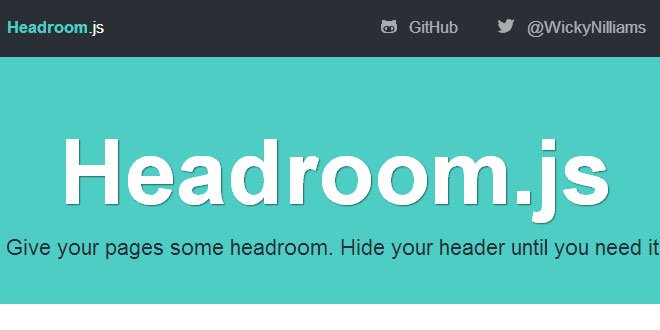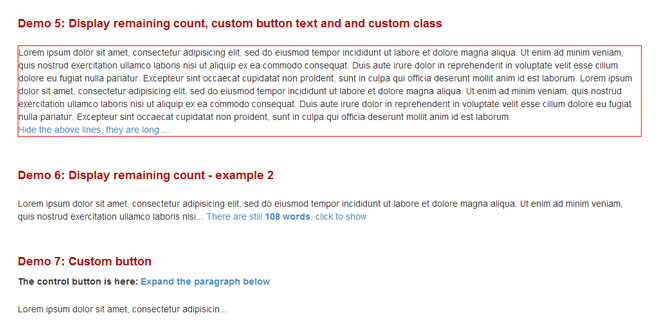User Rating: 2.1/5 ( 1 votes)
What's Headroom.js?
Headroom.js is a lightweight, high-performance JS widget (with no dependencies!) that allows you to react to the user's scroll. The header on this site is a living example, it slides out of view when scrolling down and slides back in when scrolling up.
Why use Headroom.js?
Fixed headers are a popular approach for keeping the primary navigation in close proximity to the user. This can reduce the effort required for a user to quickly navigate a site, but they are not without problems…
Large screens are usually landscape-oriented, meaning less vertical than horizontal space. A fixed header can therefore occupy a significant portion of the content area. Small screens are typically used in a portrait orientation. Whilst this results in more vertical space, because of the overall height of the screen a meaningfully-sized header can still be quite imposing.
Headroom.js allows you to bring elements into view when appropriate, and give focus to your content the rest of the time.
How does it work?
At it's most basic headroom.js simply adds and removes CSS classes from an element in response to a scroll event:
<!-- initially -->
<header class="headroom">
<!-- scrolling down -->
<header class="headroom headroom--unpinned">
<!-- scrolling up -->
<header class="headroom headroom--pinned">
Relying on CSS classes affords headroom.js incredible flexibility. The choice of what to do when scrolling up or down is now entirely yours - anything you can do with CSS you can do in response to the user's scroll.
Usage
Using headroom.js is really simple. It has a pure JS API, plus an optional jQuery/Zepto plugin and AngularJS directive.
With pure JS
Include the headroom.js script in your page, and then:
// grab an element
var myElement = document.querySelector("header");
// construct an instance of Headroom, passing the element
var headroom = new Headroom(myElement);
// initialise
headroom.init();
With jQuery/Zepto
Include the headroom.js and jQuery.headroom.js scripts in your page, and then:
// simple as this!
// NOTE: init() is implicitly called with the plugin
$("header").headroom();
The plugin also offers a data-* API if you prefer a declarative approach.
<!-- selects $("[data-headroom]") -->
<header data-headroom>
Note: Zepto's additional data module is required for compatibility.
With AngularJS
Include the headroom.js and angular.headroom.js scripts in your page, and then:
<header headroom></header>
<!-- or -->
<headroom></headroom>
<!-- or with options -->
<headroom tolerance='0' offset='0' classes="{pinned:'headroom--pinned',unpinned:'headroom--unpinned',initial:'headroom'}"></headroom>
Options
Headroom.js can also accept an options object to alter the way it behaves. You can see the default options by inspecting Headroom.options. The structure of an options object is as follows:
{
// vertical offset in px before element is first unpinned
offset : 0,
// scroll tolerance in px before state changes
tolerance : 0,
// css classes to apply
classes : {
// when element is initialised
initial : "headroom",
// when scrolling up
pinned : "headroom--pinned",
// when scrolling down
unpinned : "headroom--unpinned",
// when above offset
top : "headroom--top",
// when below offset
notTop : "headroom--not-top"
},
// callback when pinned, `this` is headroom object
onPin : function() {},
// callback when unpinned, `this` is headroom object
onUnpin : function() {},
// callback when above offset, `this` is headroom object
onTop : function() {},
// callback when below offset, `this` is headroom object
onNotTop : function() {}
}
 JS Tutorial
JS Tutorial




